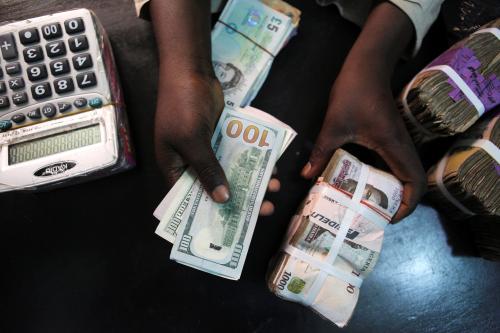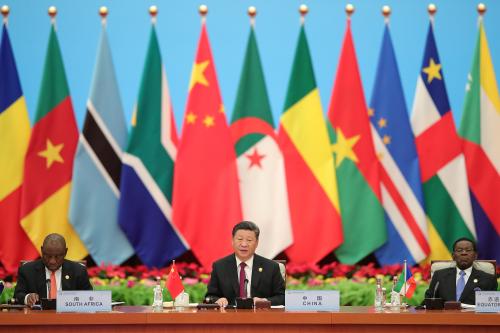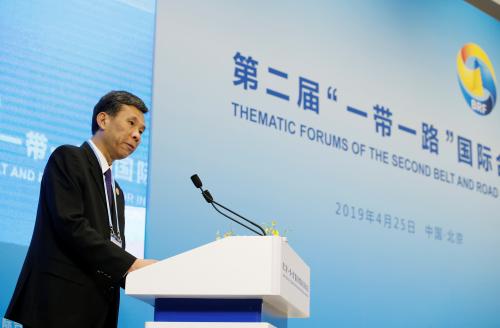This week, the National Bureau of Economic Research published a working paper on China’s overseas lending. The paper examines Chinese international lending between 1949 and 2017, including both reported and “hidden debts” (those not reported to the International Monetary Fund, World Bank, or Bank for International Settlements), as well as the impact of hidden debt on debt sustainability.
Overall, as Figure 1 shows, median debt stock as a percent of GDP contracted from China is third highest in sub-Saharan Africa, behind Far East Asia and Central Asia (economies in close geographic proximity to China). Looking at country groups, low-income developing countries and former highly indebted poor countries (HIPC) are most exposed to Chinese lending.
Figure 1: Debt to China by region
Source: Horn, Sebastian, Carmen M. Reinhart, and Christopher Trebesch. 2019. China’s overseas lending. NBER Working Paper No. 26050
While the region is third overall, individual African countries stand out as borrowers. In fact, as Figure 2 shows, African countries make up half of the top 50 nations most indebted to China as a percent of GDP. Djibouti, Republic of the Congo, Niger, and Zambia are in the top 10.
Figure 2: External debt to China (debt stock as share of GDP) – top 50 recipients
Source: Horn, Sebastian, Carmen M. Reinhart, and Christopher Trebesch. 2019. China’s overseas lending. NBER Working Paper No. 26050
Figure 3 highlights the scope of hidden Chinese lending in Africa, with hidden debts concentrated in a few countries. While the paper does not provide country-level data, it notes that hidden debts in Africa are mostly located in resource-rich countries. Globally, the authors estimate that 50 percent of Chinese foreign lending is not officially recorded by the World Bank’s International Debt Statistics database. Further, the amount of missing debt in the World Bank database has increased in recent years.
Figure 3: External debt trends and “hidden” debt to China
Source: Horn, Sebastian, Carmen M. Reinhart, and Christopher Trebesch. 2019. China’s overseas lending. NBER Working Paper No. 26050
Notably, the authors emphasize that there has been a more than proportional increase in external debt servicing costs compared to external debt levels once hidden debts are considered. The primary reason for this increase is that Chinese lending is mostly at market rates whereas traditional lenders such as the multilaterals and Paris Club members lend at concessionary rates. The tenure of Chinese loans is also usually shorter, leading to larger annual repayment amounts.
In the end, the paper concludes that Chinese lending is the primary driver for a group of low-income countries reaching debt levels and servicing costs close to the pre-HIPC period. The authors also warn that “[d]ebt sustainability metrics are poorer than generally perceived, especially so in about two dozen developing countries that borrowed heavily from China during the boom decade of 2003-2013,” and that “hidden overseas debts pose serious challenges for country risk analysis and bond pricing.”
For more on the rising and changing debt in Africa, see the recent Africa Growth Initiative policy brief, “Is sub-Saharan Africa facing another systemic sovereign debt crisis?“
The Brookings Institution is committed to quality, independence, and impact.
We are supported by a diverse array of funders. In line with our values and policies, each Brookings publication represents the sole views of its author(s).










Commentary
Figure of the week: China’s ‘hidden’ lending in Africa
July 10, 2019